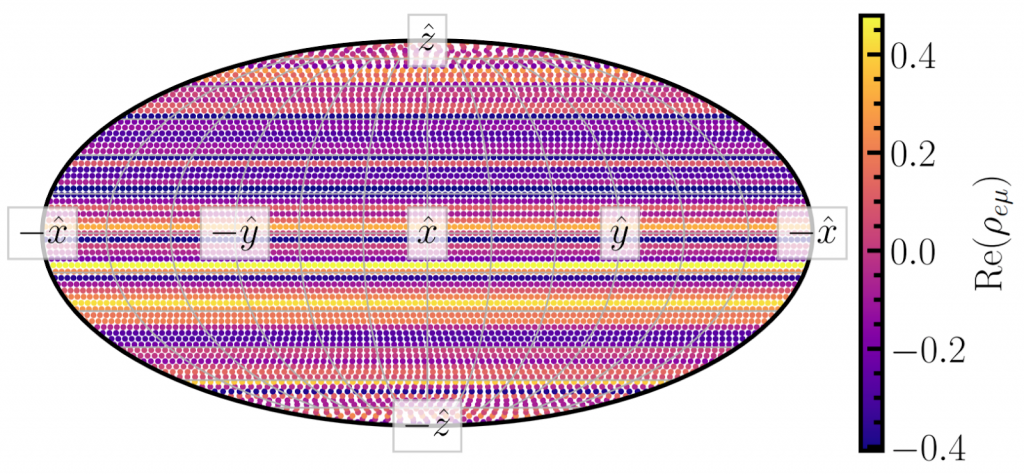Using Software to Simulate Neutrino Flavor Instability
A fantastic amount of neutrinos are emitted during cataclysmic astrophysical explosions like core-collapse supernovae and neutron star mergers. In both cases, the emitted neutrinos drive outflows that end up enriching the space around the explosion with heavy elements, which eventually condenses into stars and planets that are formed from this gas.
However, different flavors (i.e., types) of neutrinos do so differently. Recent research indicates that there are flavor instabilities that can convert neutrinos between flavors in a rapid and richly nonlinear manner. The full implications of this flavor changing are not well understood, and we still lack even a means of definitively predicting the total abundance of each flavor after the instability has mixed everything together.
We have created a new code, Emu, that simulates the flavor of a large number of individual neutrinos as they fly around. This method borrows from a well-word plasma physics technique, but this is the first time it has been applied to neutrino physics.
Being able to follow the flavor evolution of each individual neutrino allows us to confidently predict the total abundance of each flavor of neutrino in a small 64-centimeter box. This is much smaller than the astrophysical explosions (which happen on length scales of hundreds of kilometers), but allows us to better understand the fine details without having to simulate the whole explosion.

We show that the numerical results accurately reproduce analytic expectations where such expectations are available. In the nonlinear regime where no analytic methods are available, we show that the details of the distribution, including the initial total number of each type of neutrino and the directions they travel in, impact this flavor transformation in a smooth way.
Although these simulations are restricted to one spatial dimension, the results make us more confident that we will eventually be able to predict the outcome of the flavor transformation without needing simulations like these. Only if we get to that point will we be able to incorporate this flavor-changing physics into the full simulations of supernovae and neutron star mergers, since it is currently impossibly expensive to do so directly.
This introduction was prepared by Sherwood Richers, N3AS Fellow and co-developer of Emu.
Read More:

